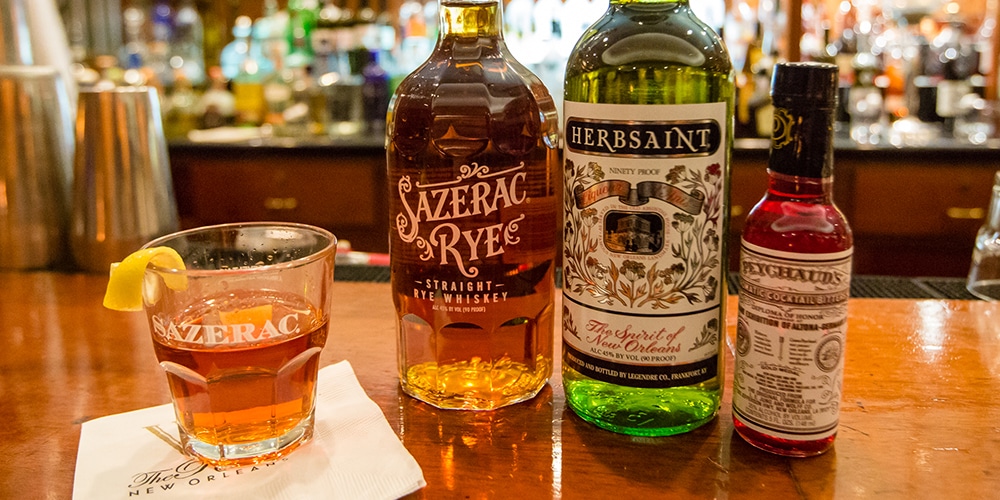This may come as no surprise: New Orleans has an official cocktail.
The Sazerac was formally designated by Louisiana state legislature in 2008. And it’s an excellent pick. The Sazerac manages to corral a lot of history into a little glass.
For starters, it contains the DNA of America’s original cocktail. (The Sazerac was not the first cocktail ever invented, despite what you may overhear from tour guides.) The nation’s first cocktail was defined in 1806 (in upstate New York) as being made of liquor, sugar, and bitters.
The Sazerac is traditionally made with cognac (in fact, originally with a long-gone brand of cognac called Sazerac), but that shifted to rye during the lamentable shortages of the late 19th century, when Europe’s grapes were beset by a pest. Into the spirit went a cube of sugar, along with some generous dashes of Peychaud’s Bitters, which had been made in New Orleans since the days of Andrew Jackson.
Two other elements define a Sazerac, although more in aroma than taste. The glass is first “rinsed” with a tablespoon or so of Herbsaint, an anise-flavored liqueur. (This was an absinthe substitute created during the absinthe ban; some bars have brought back the original with its return to legality.)
And, second, a twist of lemon provides a wispy scent of citrus. So to drink a Sazerac is to descend pleasingly through aromatic layers of lemon and licorice before getting to the sweetened and bittered liquor.
Where to sample? Just about anywhere in the city. All reputable bars know how they’re made, as do most disreputable ones.
Arnaud’s French 75 is all dark wood and white-jacketed bartenders and has the timeworn, classic feel of a Parisian hotel bar. The Sazerac feels at home here.
Bar Tonique is an upscale but unassuming bar favored by locals that pays particular attention getting cocktails right.
The eponymous Sazerac Bar off the lobby of the Roosevelt Hotel cranks out delightful Sazeracs by the dozen, and does so in an atmosphere that brings to mind a 1940s steamship lounge.
At SoBou you can order a Sazerac made with a touch of Louisiana’s Steen’s cane syrup, bringing local sugar cane fields through the city and into your glass. You can even get a creditable Sazerac on Bourbon St., better known for day-glo drinks served in vessels large enough to contain one of the smaller Great Lakes.
In 1940, the New York Times cited the Old Absinthe House for the tastiness of its Sazeracs. That still holds today.
And here’s an idea: Ask the bartender to put your Sazerac in a to-go cup, then take your bit of local history for a stroll in search of adventures past and present.




